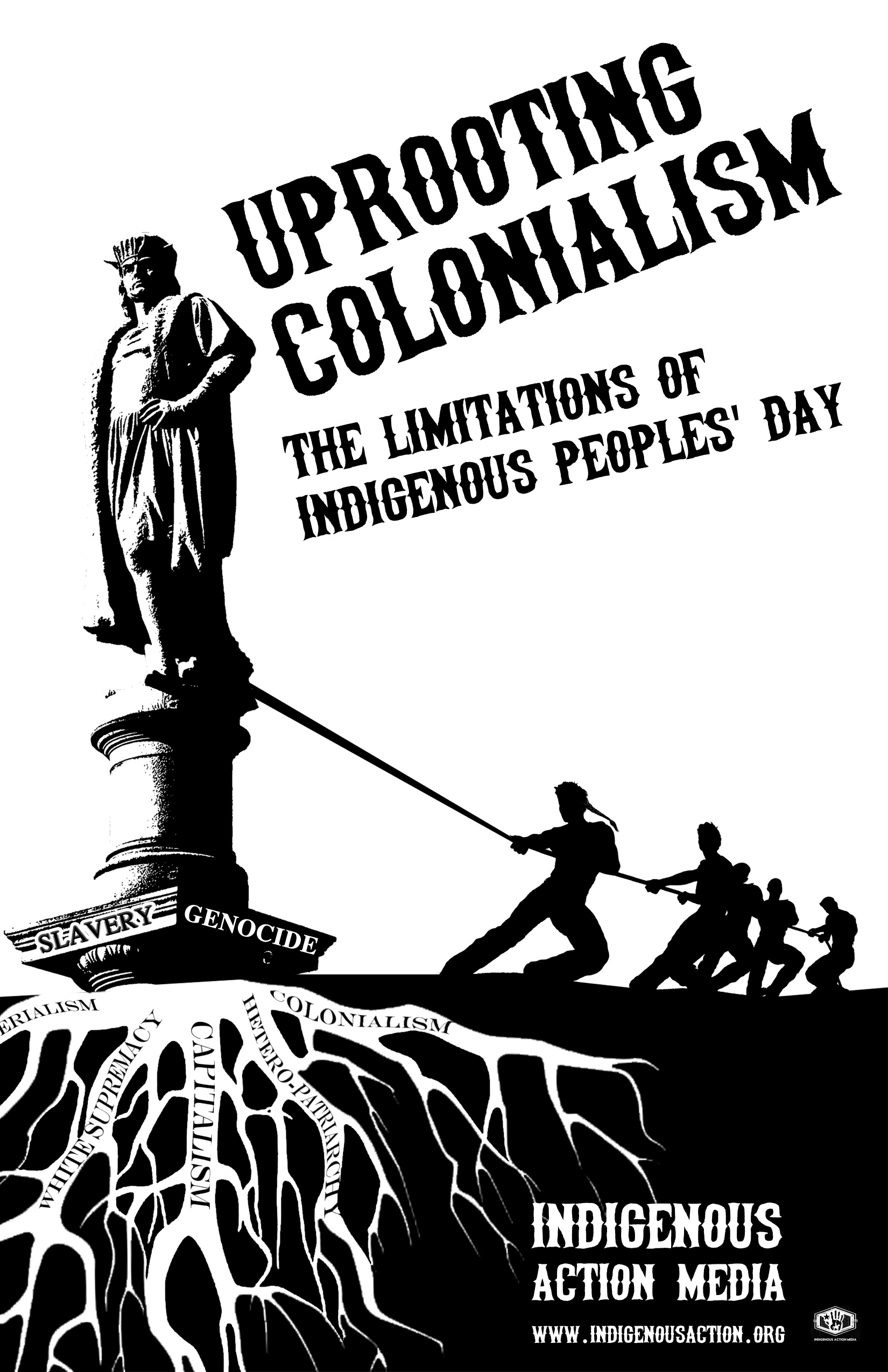
Project Description
Uprooting Colonialism: The Limitations of Indigenous Peoples’ Day - Fall 2017
Declarations, Disconnect, & Decolonial Recuperation
As momentum has accelerated for occupying forces to issue declarations of “Indigenous Peoples’ Day (IPD),” we can’t help but feel disconnected from the revelry.
Aside from psychic solace, if the state dismantles these statues and proclaims Indigenous Peoples’ Days, what do we actually achieve if the structures and systems rooted in colonial violence remain intact? Is it merely political posturing or window dressing to diminish liberatory agitations? Our senses are heightened as most re-brandings of Columbus Day into IPD appear to whitewash ongoing colonial legacies.
The statistics are all too familiar: Indigenous Peoples in the “U.S.”
are the ethnic group that faces the highest police murder rate, the
highest rates of incarnation, homelessness, and sexual violence.
So yes, we have very good reason to be skeptical of symbolic gestures.
We’re all for removing colonial symbols and nationalistic myths, so long as structures such as colonialism and racism go along with them. Problem is they are not. These edicts are readily embraced by their advocates as “steps in the right direction” for Indigenous interests, yet—as we’ll assert here—only serve to calcify colonial rule. What else are we to glean from superficial declarations handed down by occupying governing bodies?
Decolonial aspirations are stunted with liberal cosmetology if nothing concrete is done to address historical and ongoing anti-Indigenous brutality. This is an insidious conciliatory process of decolonial recuperation that is rooted in cultural and symbolic change primarily fixated on transforming social stature. It fails to meaningfully confront and transform social power.
READ THE REST HERE: http://www.indigenousaction.org/uprooting-colonialism-the-limitations-of-indigenous-peoples-day/
